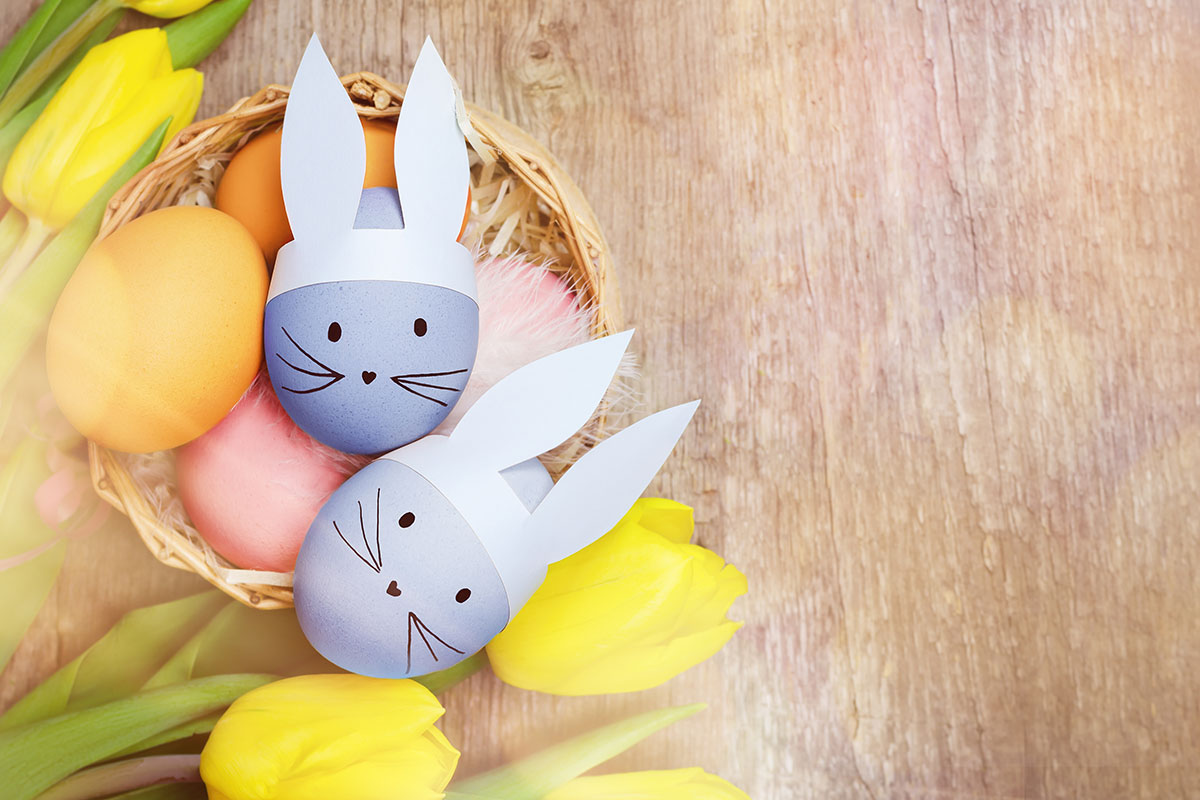
With Easter approaching, I love spending time with my family. Preparing traditional dishes, baking sweets, and, of course, decorating eggs are just some of our Easter rituals. Easter eggs are an integral part of our celebration, but decorating them is a true pleasure for me and my children. Over the years, I've tested many different ways to decorate eggs, and now I'd like to share with you my favorite techniques that will turn your eggs into true works of art.
Painting boiled or blown eggs?
Remember that when painting eggs for consumption, you should use food coloring and other non-toxic materials. If you want to experiment with various creative Easter egg decorating techniques or want to preserve them as decorations for longer, it's best to blow them out first or use Styrofoam or wooden eggs.
Painting Easter eggs with egg dyes
The most common technique for painting eggs is simply using egg dyes available in any store. This technique may not be particularly sophisticated, but it certainly delivers charming results. Colorful eggs are, after all, a hallmark of Easter, reminding us of beautiful moments from our own childhood. Using ordinary dyes also makes sense for little ones. If they aren't yet capable of painting eggs themselves, they'll gaze with delight as the eggs, immersed in mysterious, colorful mixtures, emerge with a fairytale color and appearance.
Colors straight from nature - painting eggs with natural dyes
My kids love decorating eggs in different ways, but our favorite is decorating eggs with natural dyes . It's not only eco-friendly and healthy for our family, but also educational for the kids, who learn that colors can come from natural sources.
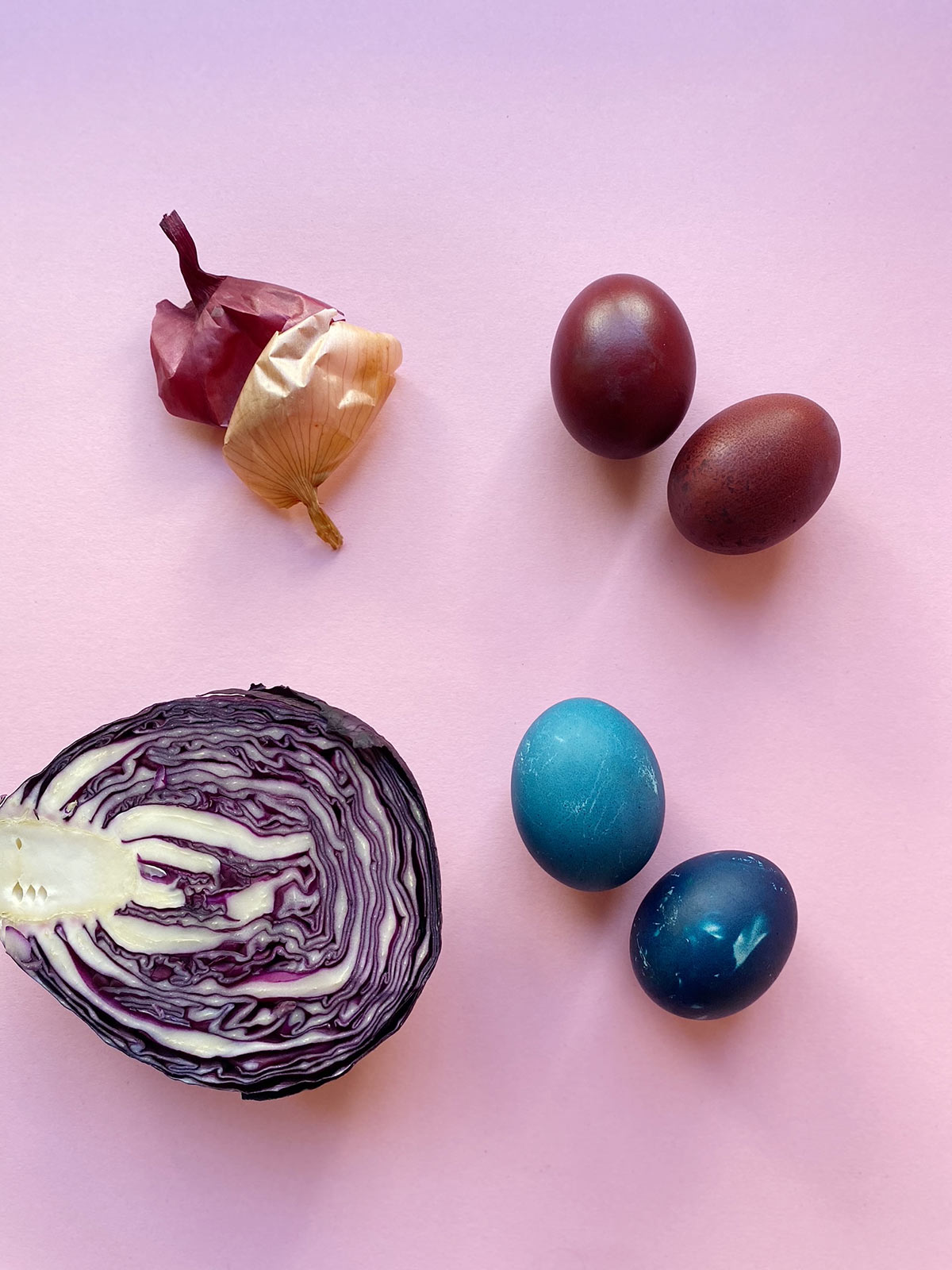
Obtaining dyes from natural ingredients is very easy. You can use onion peels, beets, berries, coffee, tea, spinach, and many other products. My children were delighted when they discovered they could get brown from onion peels and blue from red cabbage.
Dreamlike napkin pictures - decorated using the decoupage technique
Decoupage is a wonderful way to decorate Easter eggs. This method involves cutting out patterns from decorative table napkins and gluing them onto the eggs. You can use napkins with various motifs, such as colorful flowers, bunnies, or Easter bunnies. I really like this method of decorating Easter eggs because it allows me to use individual napkins left over from previous occasions.
Decorating eggs with decoupage is ideal for those who aren't confident painting or drawing but want to create beautiful Easter egg designs. It's also a great opportunity to introduce this technique to children, who will be delighted with the elegant results.
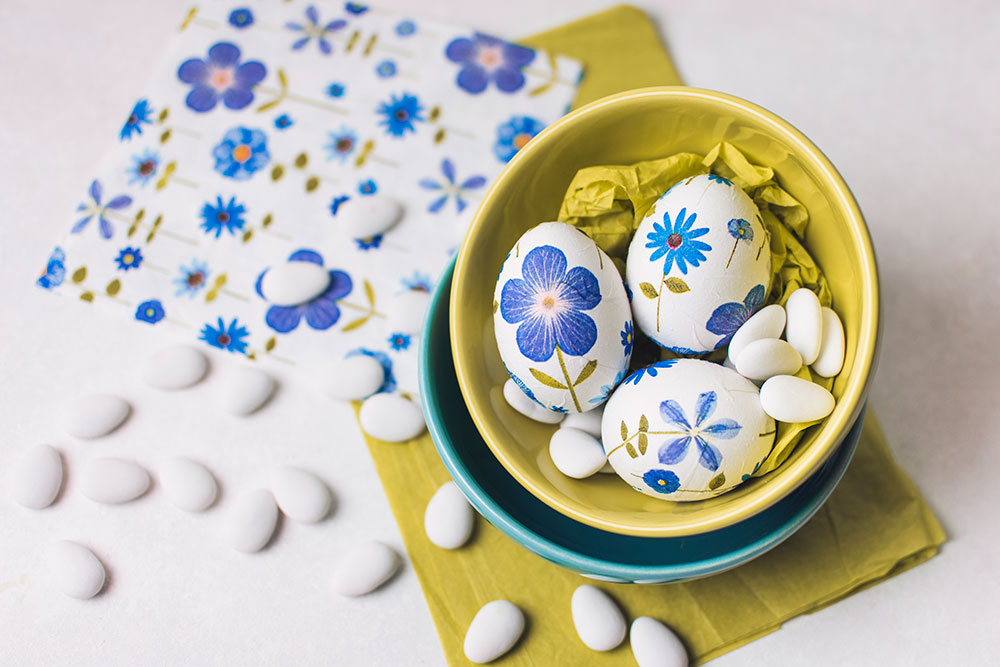
To decorate an egg using this technique, simply cut out the desired design from a napkin and glue it onto the egg. First, separate the napkin layer, leaving only the printed layer. Cut out the design and apply it to the egg. Using a paintbrush dipped in glue, paint the design onto the eggshell, gluing it to the shell. Then, leave to dry. If decorating boiled eggs using this technique, remember to use food glue. When decorating artificial eggs, such as Styrofoam eggs, the design can be protected with acrylic varnish.
Eggs with trendy spots - decorating Easter eggs using the Tiedye method
Another method we can use to decorate Easter eggs with children is the tie-dye technique. It's a wonderful way to create colorful and original eggs. It's also a very simple technique that produces spectacular visual effects.
To make tie-dye eggs, first place the egg on a paper towel, then wrap the paper towel around the egg and secure it with a rubber band. Using a brush, apply various colors of paint to the towel. The colors transfer through the towel to the egg, creating beautiful, surprising patterns.
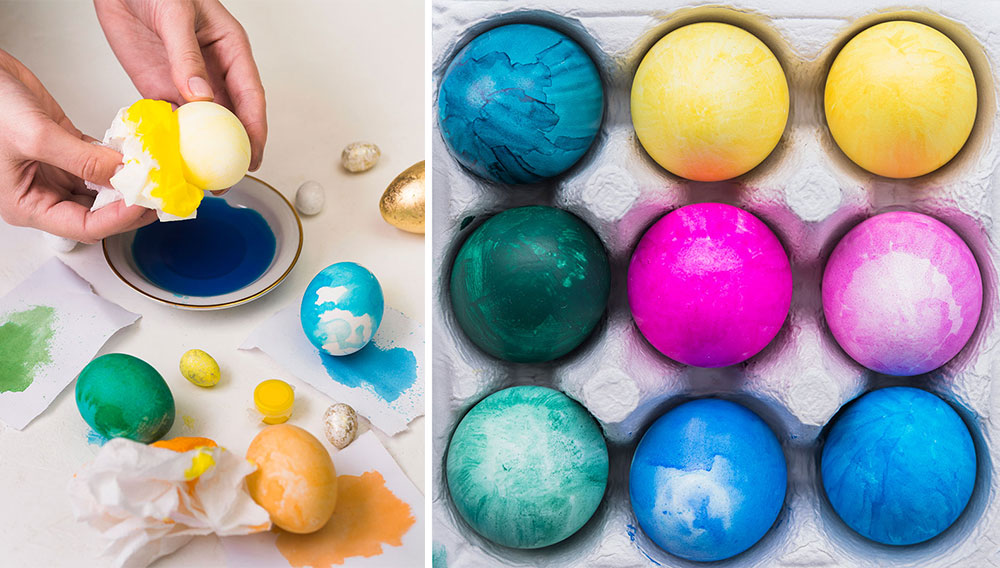
My kids love this method because each egg turns out slightly different, and you never know what the final result will be. This makes each child feel like their egg is special and unique. What's more, this technique is simple and can even be done with little ones, which is sure to be a lot of fun.
Wax-painted eggs
Another way to decorate eggs with children is to use wax or white crayon. This method can be more difficult for young children because it requires precise drawing of the designs on the egg, and the drawn designs are difficult to see.
To get started, you'll need to draw a design on the eggshell using wax or a crayon. Once the design is drawn, dip the egg in the dye. The dye won't absorb into the shell with the wax applied, so when you remove the egg from the dye, you'll have a beautiful design.
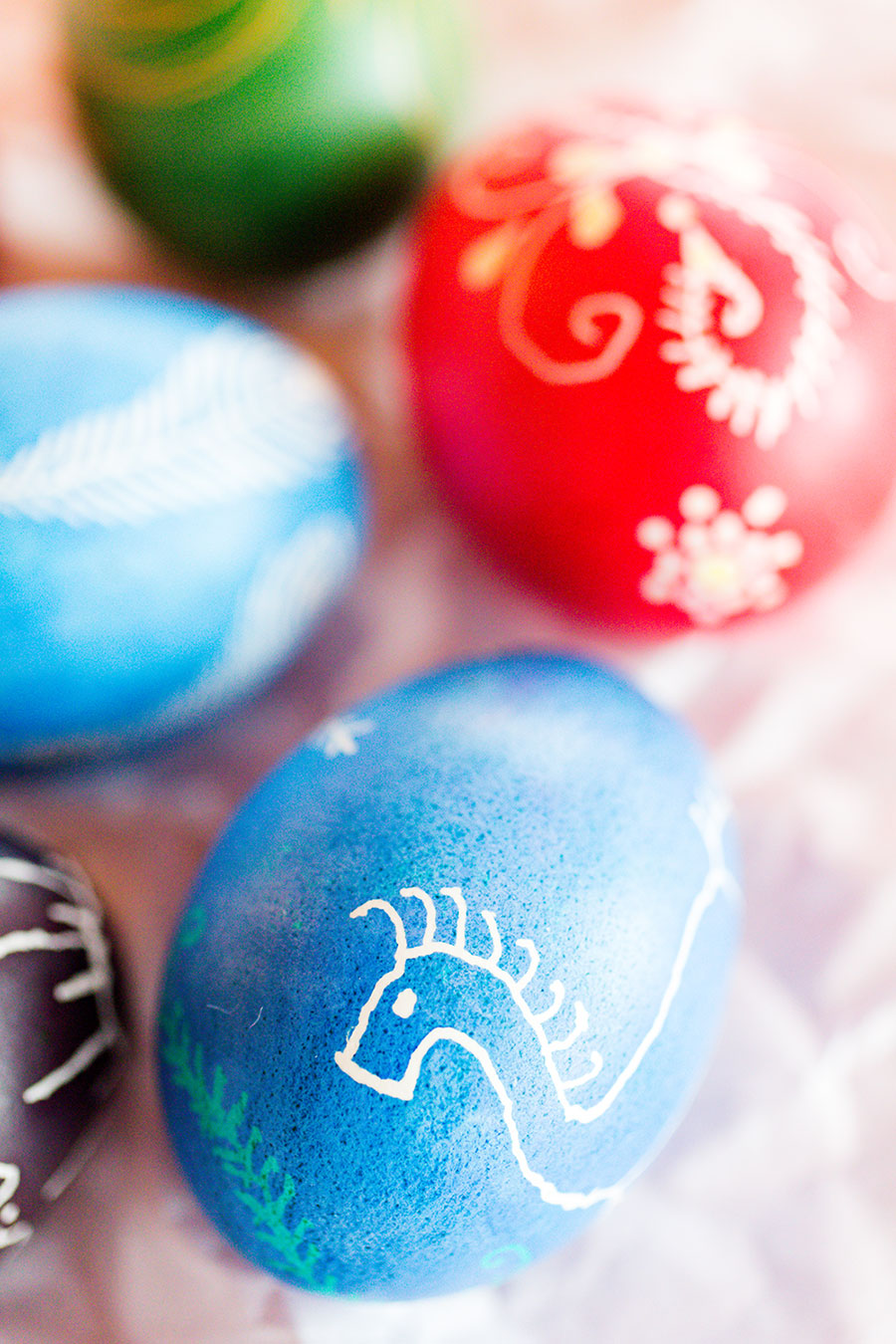
My children enjoy this method because they can create their own unique designs. However, applying the wax or crayon requires some practice, which can be difficult for younger children. Therefore, I recommend this technique for older children or adults who want to spend time creatively.
Any painting according to the children's ideas
Let children figure out how to decorate their Easter eggs themselves, for example, using markers or paints. This way, children can freely paint the eggs and express their creativity. They can draw their favorite animals, fairy tale characters, or abstract designs on the eggs. Painting eggs gives children the opportunity to express themselves through art, developing their imagination and manual dexterity.
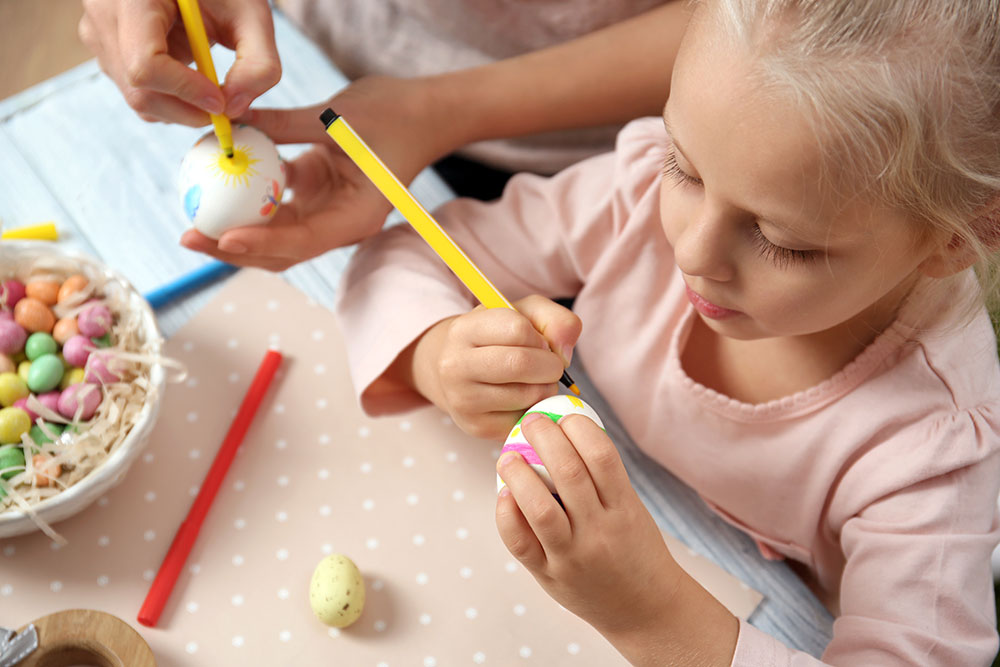
For this type of game, it is best to use artificial eggs, e.g. Styrofoam or wooden.
When children are painting eggs, it's also worth offering them alternative painting materials. For example, you can use glitter paints, which will add extra sparkle to the decorations, or fluorescent paints, which, when applied to the egg, will glow in the dark. For little ones who are still unsteady on their hands, you can suggest painting simple but cheerful patterns, such as dots or patterns.
Traditional Polish Easter eggs
One of the biggest challenges I faced while painting Easter eggs was creating traditional folk designs. This activity will appeal more to adults and older children with a passion for Polish history and culture. The traditional technique requires not only skill but also patience and precision.
Traditional Polish eggs are painted with a brush and acrylic or tempera paints. Before you start painting, it's a good idea to take your children and explore the folk patterns on eggs, which can be found at many Easter markets and fairs, or in books about Polish culture.
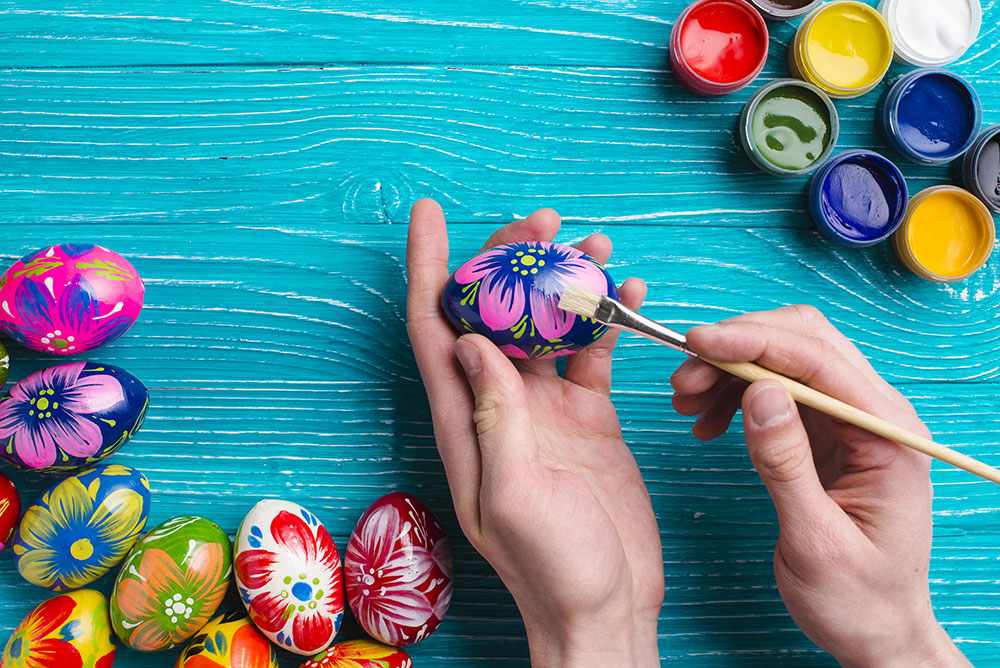
When painting eggs the traditional way, it's important to have a thin brush and well-chosen paints. You can start with simple patterns like lines and dots, then gradually move on to more complex floral patterns and plant and animal motifs, such as the Łowicz roosters. Painting eggs the traditional way is a difficult but rewarding decorating technique that requires some time and effort. However, it's worth trying with your children to learn about Polish Easter traditions and spend time together in a creative way.
Contemporary minimalism in a charming edition
The opposite of folk decorations is the currently fashionable minimalism. Decorating eggs in a minimalist style can be a wonderful option for those who prefer simplicity and subtlety. In this case, less is more, and the simplest ideas can be the most beautiful.
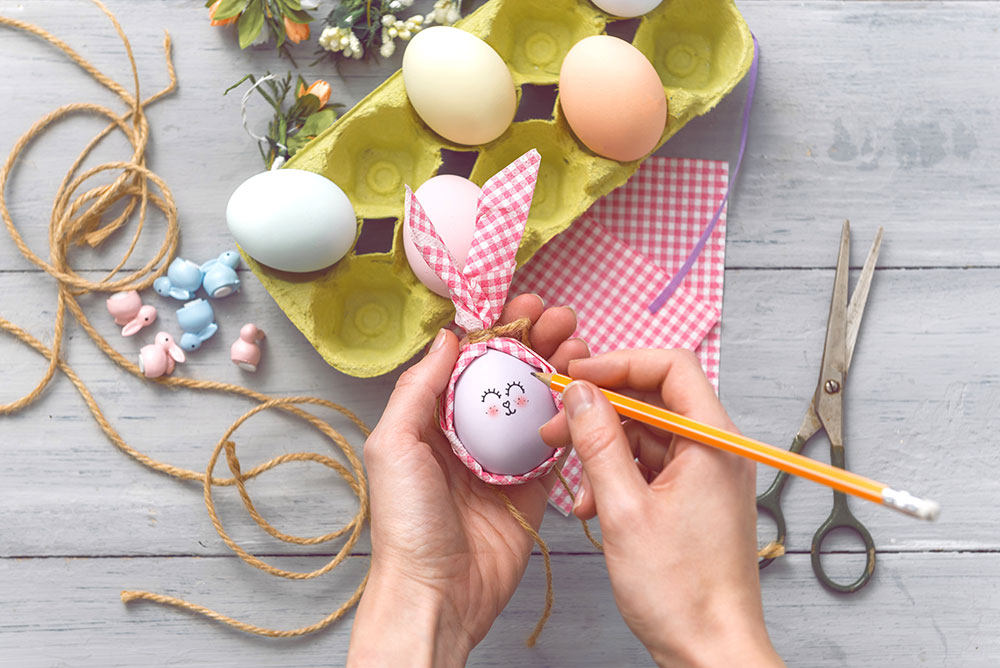
One idea for minimalist egg decorating is to draw a small bunny face on the egg. Simply draw eyes, a tiny nose, and a muzzle to create a charming and subtle work of art on the egg.
We can also decorate this minimalist Easter egg with a tissue to create bunny ears. Wrap the egg in the tissue so that the two ends of the tissue at the top of the egg form bunny ears.
Decorating Easter eggs using the marble method
Decorating eggs this way not only creates beautiful, minimalist Easter eggs, but is also great fun for little ones. My kids love this technique because it's similar to playing with clay, like slime, while also creating wonderful Easter works of art. Check out our tutorial on decorating Easter eggs using the marble method and, together with your children, immerse your hands in the coloring paste and your minds in the ocean of creativity.
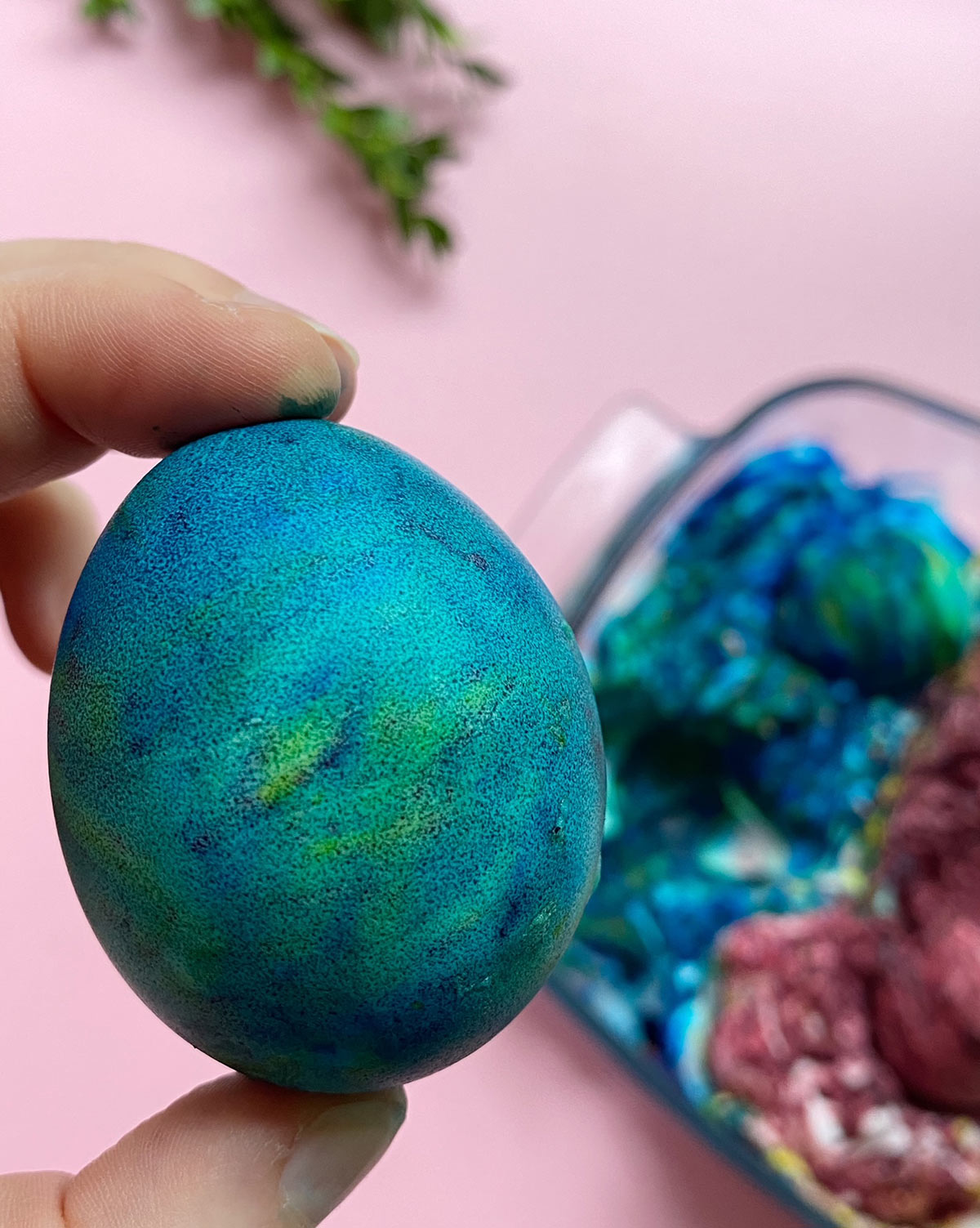
Egg decorating is a wonderful tradition that connects generations and reminds us of the upcoming holidays. Decorating eggs together is a great opportunity to spend time with family and children. Choosing different techniques and decorating styles allows you to create unique works of art that can be displayed at home or given to loved ones. You don't need great artistic talent; just a willingness to have fun and experiment. The important thing is to have fun and enjoy the results of your work with your children. After all, it's all about creating unforgettable memories and spending quality time with loved ones in the spirit of the holidays.
Guest post written by the author of the blog “Marchewkowa Mama”.


Podziel się:
DIY Easter Bags for Bunny Gifts
Easter Tulle Wreath - Easy Project for Kids